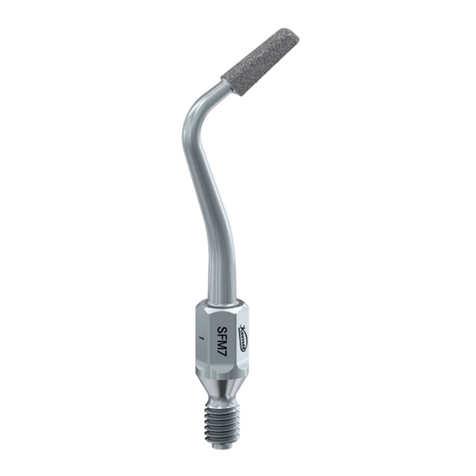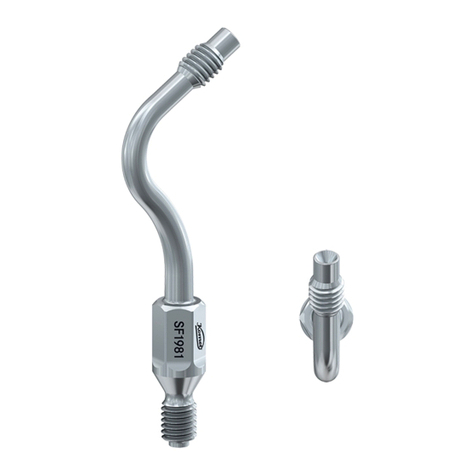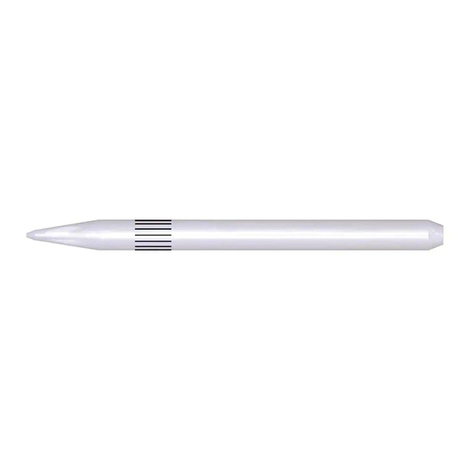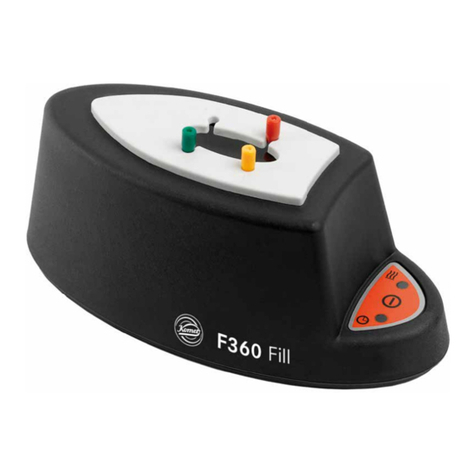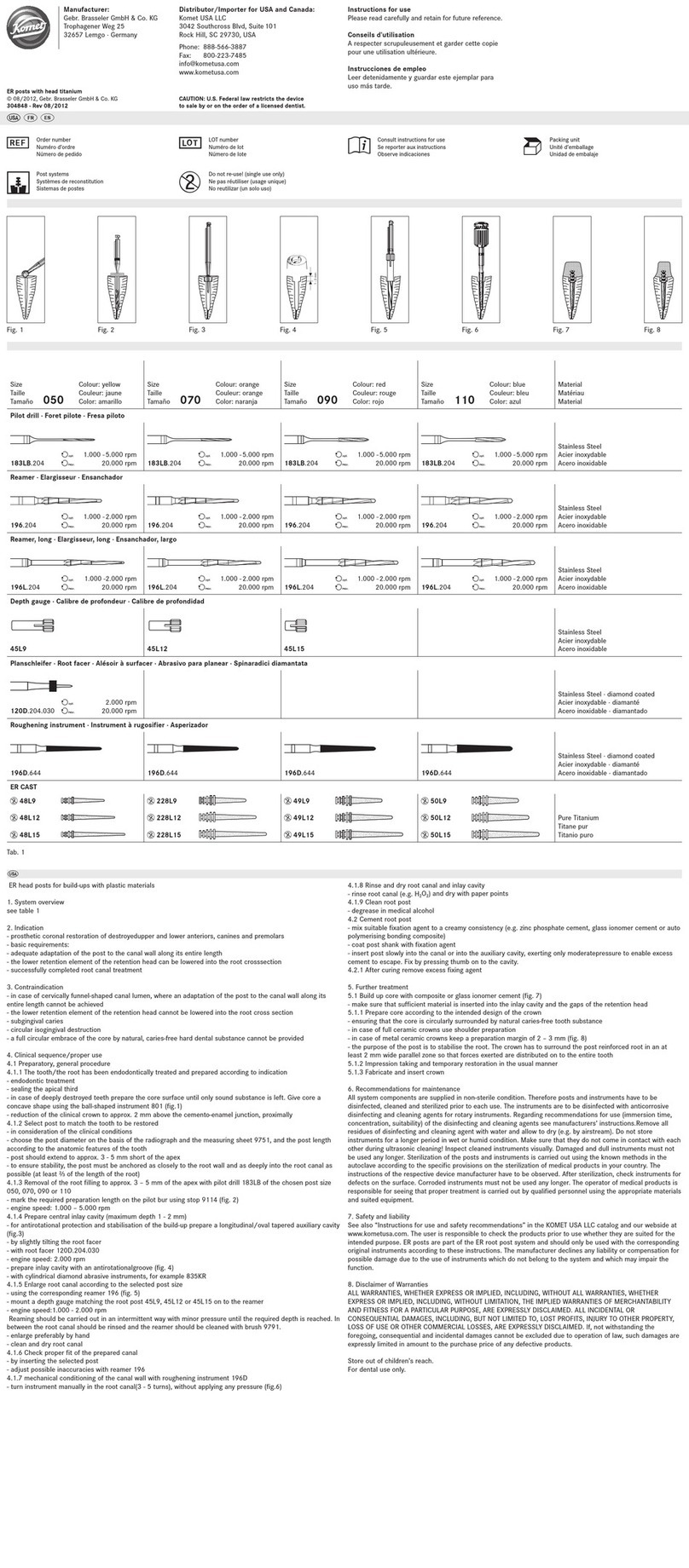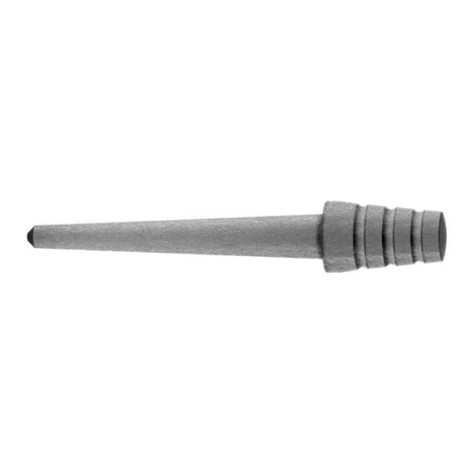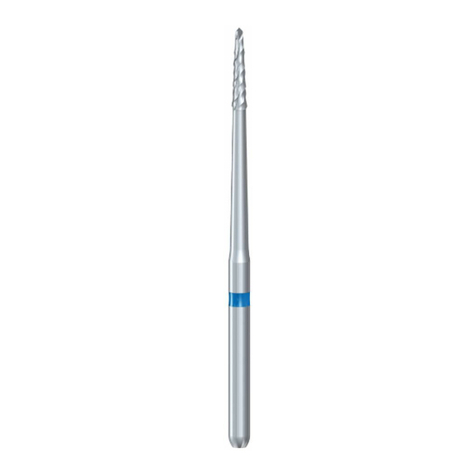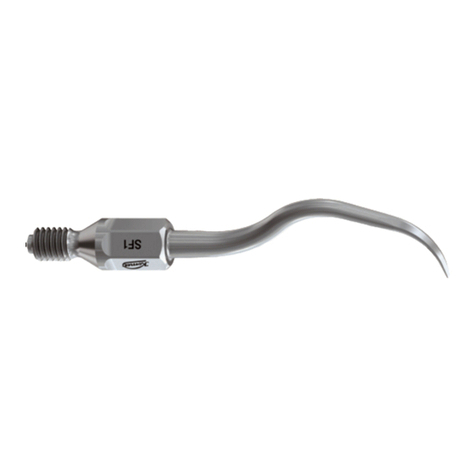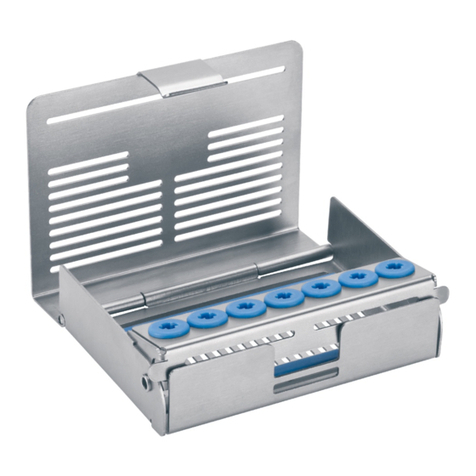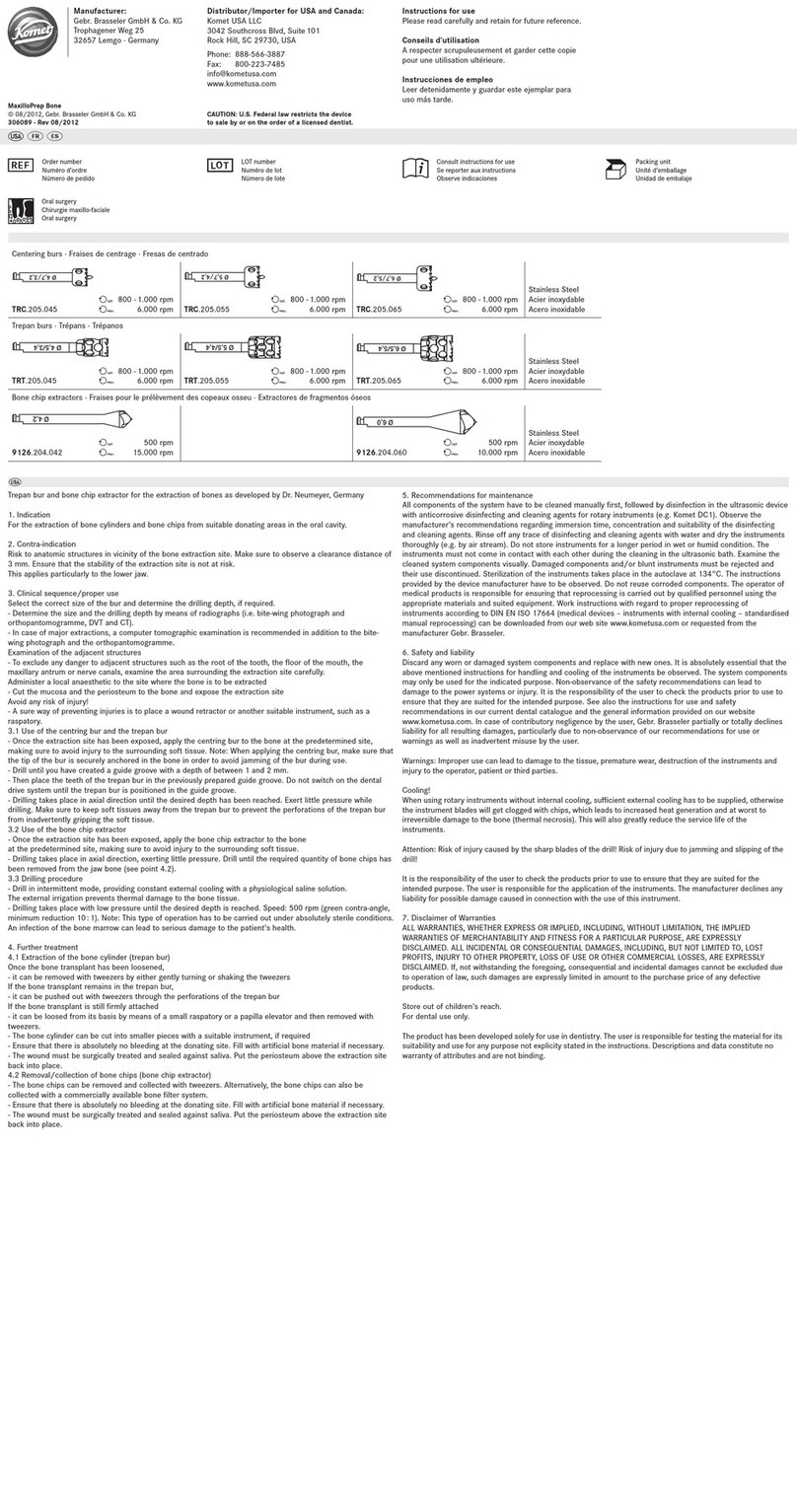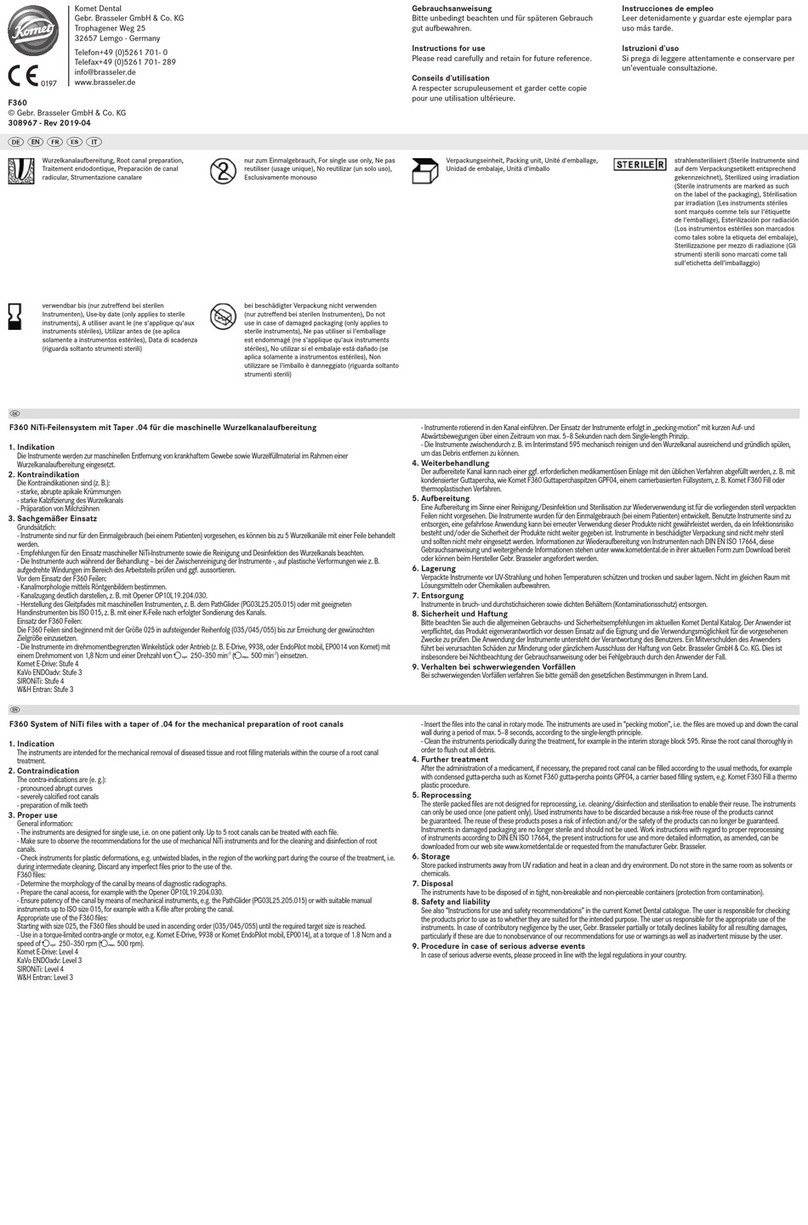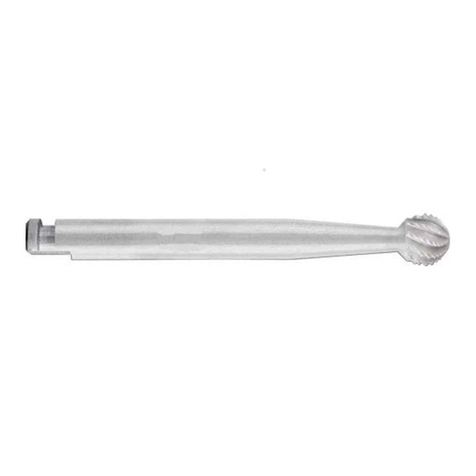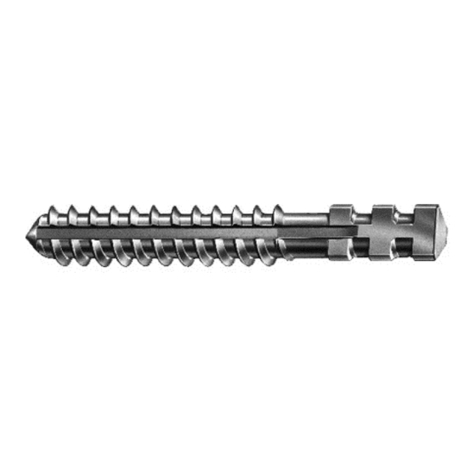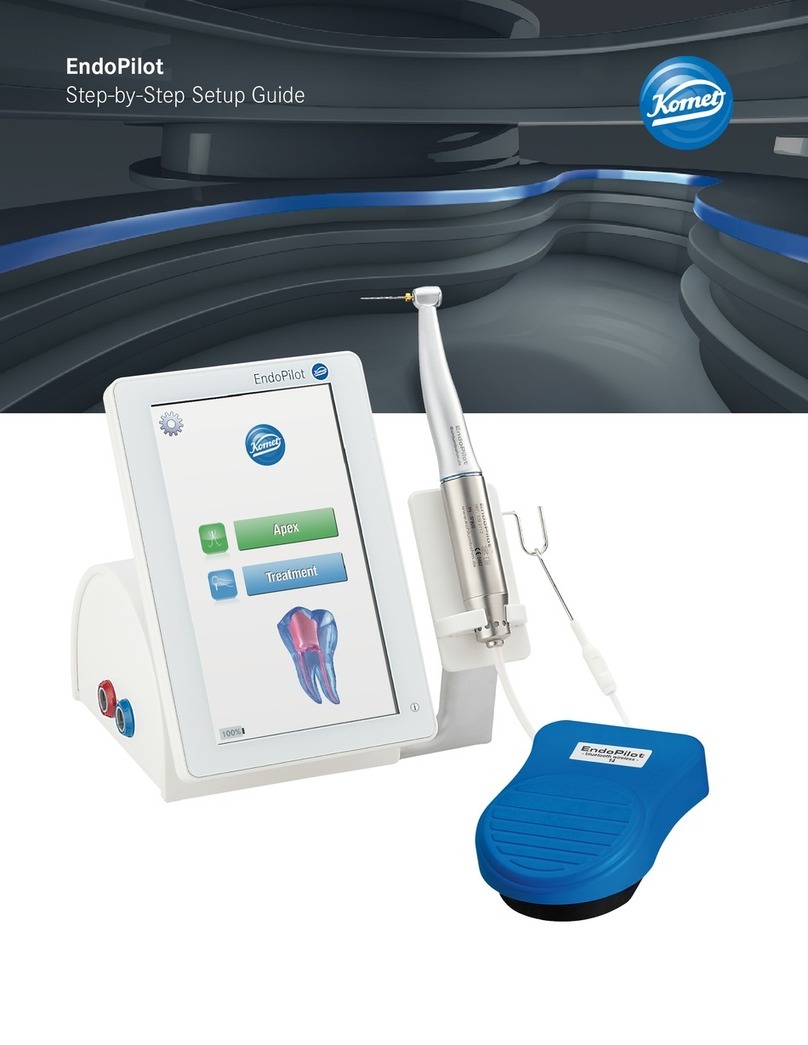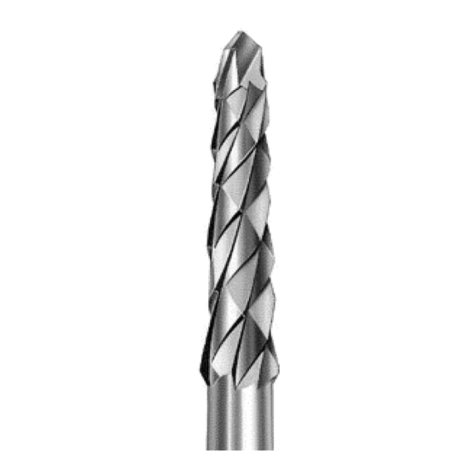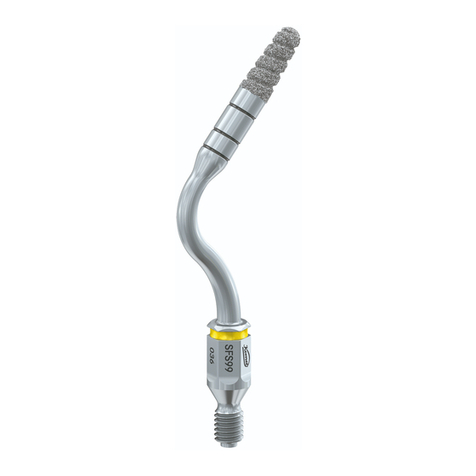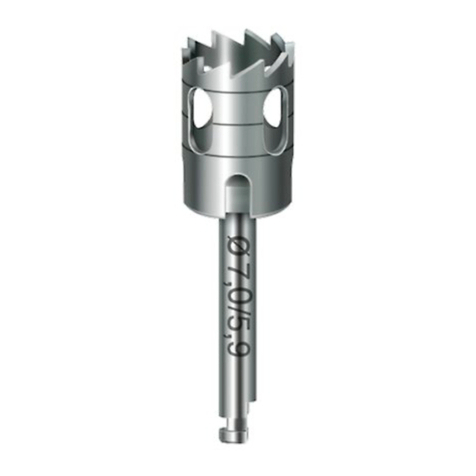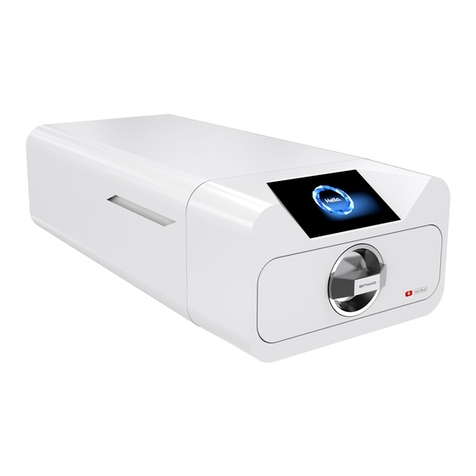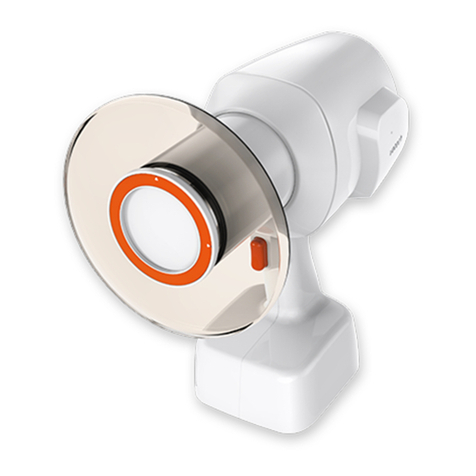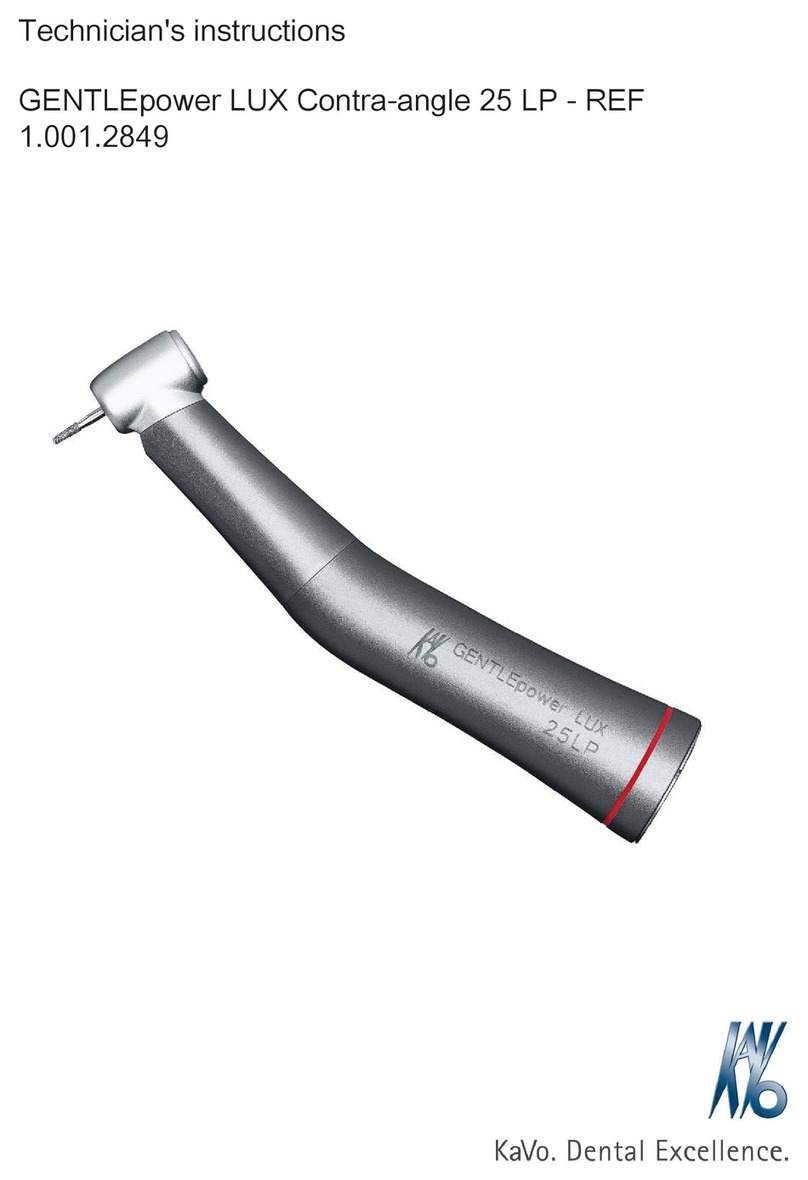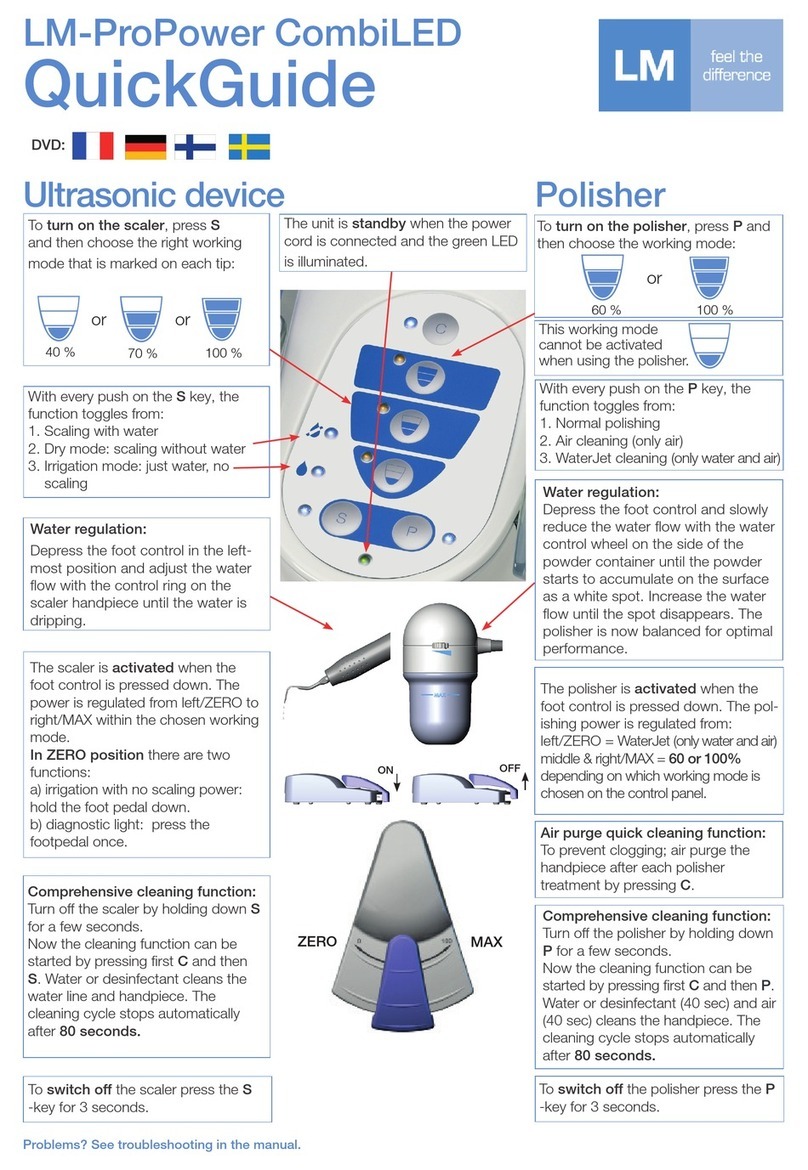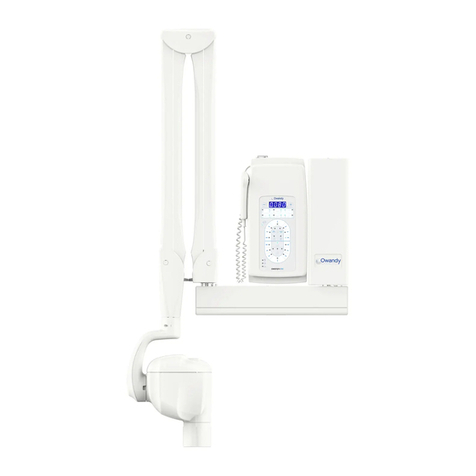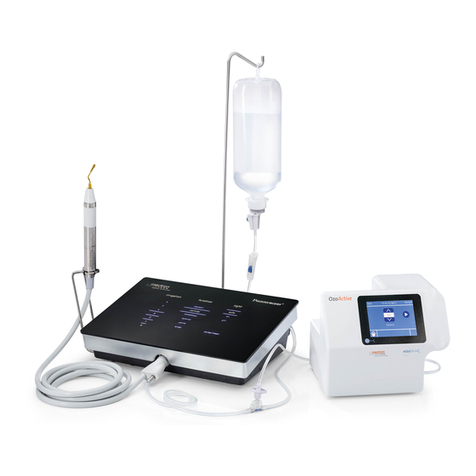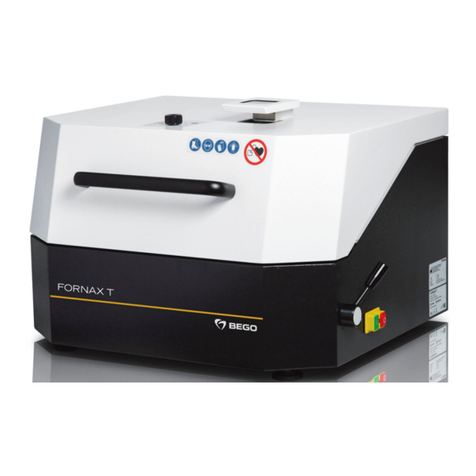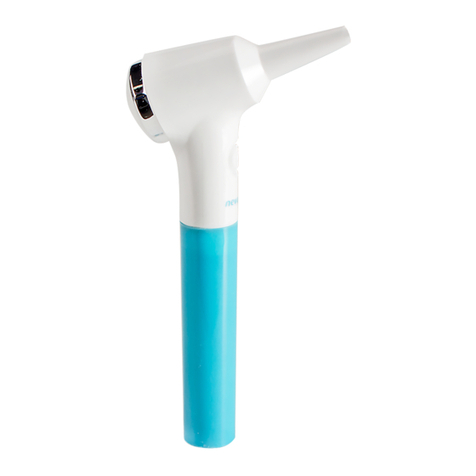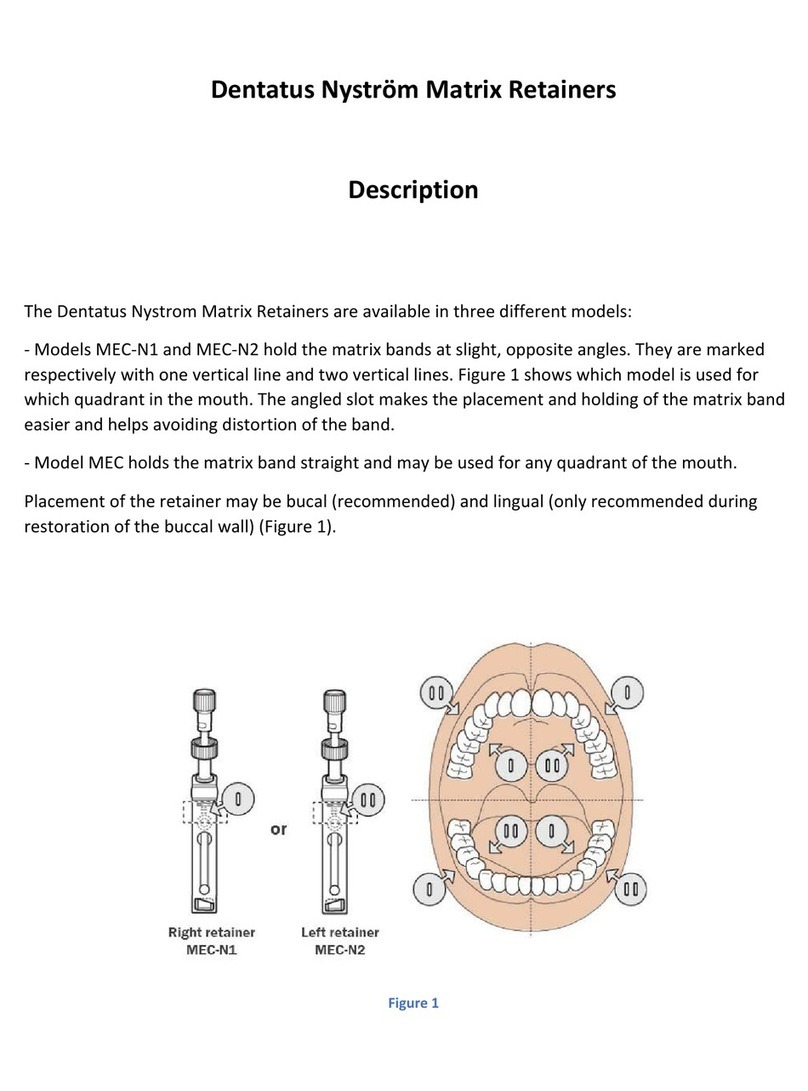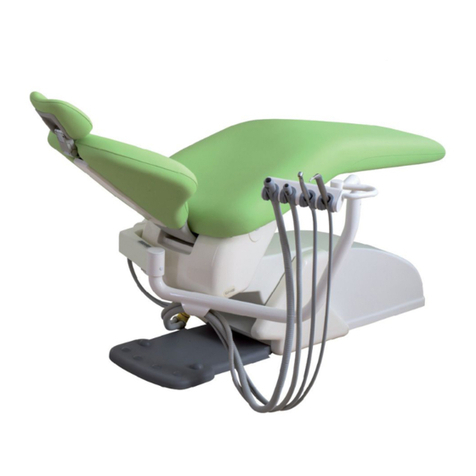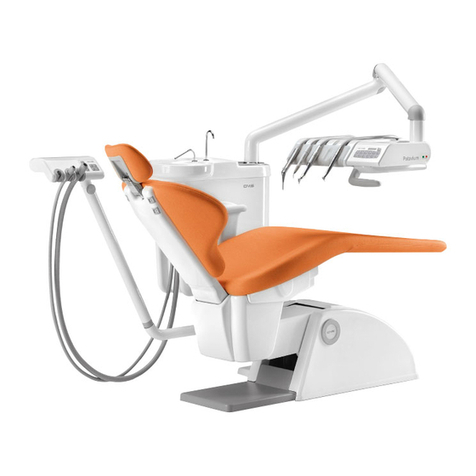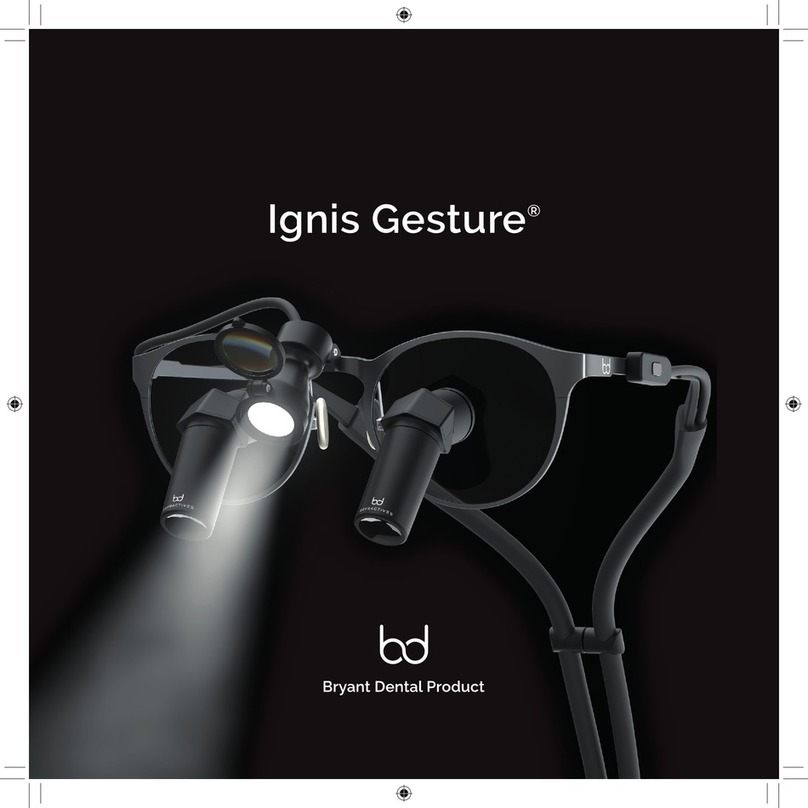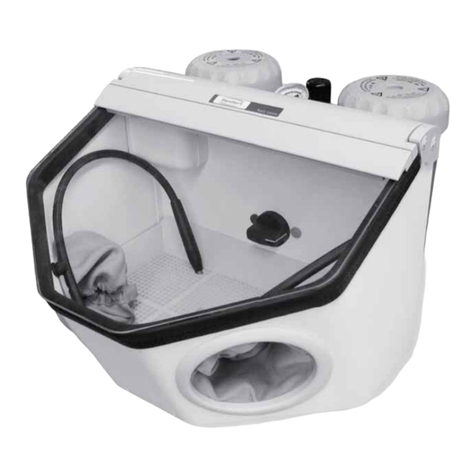
ITALIANO
1. Condizioni di utilizzo
I valori massimi ammissibili di numero di giri, della corsa, del
peso dell'utensile e del carico sui fermi meccanici devono essere
definiti a secondo delle dimensioni della testa a sfacciare. Quando
si calcola la forza da applicare alla barre di trazione occorre tenere
in considerazione anche il carico dovuto alle forze di taglio. Se
dal calcolo delle forze risultasse un valore troppo elevato occorre
ridurre il numero di giri o la velocita di avanzamento in proddi-
mita' dei fermi meccanici per evitare di spingere eccessivamente
aulle parti meccaniche. Se le testa a sfacciare sono utilizzate su
macchine a Controllo Numerico i fermi meccanici non devono
essere utilizzati; il carico massimo da applicare e' determinato
solamente dalla dimensione della dentatura dell'asta di trazione.
2. Liguido refrigerante
Quando si usano delle teste a sfacciare con le superfici di scor-
rimento rivestite non e' possibili utilizzare dei liquidi refrigeranti
aggressivi con alta percentuale di zolfo e cloro.
3. Manutenzione
Qualsiasi riparazione o ricondizionamento delle teste devono
essere effettuate solamente presso il reparto teste di KOMET®.
Dopo lo smontaggio tutte le parti della testa sono rigorosamente
controllate per verificare la possibilita' di riutilizzo e se neccessario
sostituite completamente. Dopo la riparazione eseguita presso
il nostro reparto praticamente vi restituiamo la testa nelle stesse
condizioni come da nuova. Vi suggeriamo, per evitare fermi
macchina, di avere sempre una testa di scorta. Preventivamente la
manutenzione completa presso il nostro reparto deve essere fatta
a intervalli di 5.000 a 10.000 ore effettive di lavoro. KOMET®
Vi puo' offrire un contratto di manutenzione che comprende
la sostituzioni delle parti di ricambio e tempi ridotti di ritorno
della testa.
4. Lubrificazione centrale
La lubrificazione automatica centrale avviene attraverso il tirante
della testa. Le seguenti indicazioni sono valide per tutti i tipi e
grandezze delle teste a sfacciare KOMET® e si prega di osservarle
sscrupolosamente per garantire loro un perfetto funzionamento.
• Quantità dell'olio: secondo la grandezza della testa 0,2 - 1,5 cm³
• Sequenza degli impulsi: ogni 5 - 15 minuti
• Pressione: 15 - 20 bar
La pressione avviene tramite un temporizzatore e la durata degli
impulsi deve c.a. 10 - 20 secondi. Nel calcolo della quantità e della
durata è da considerare la portata e la lunghezza delle tubazioni
dell'impianto della lubrificazione.
5. Lubrificatzione manuale
La testa deve essere lubrificata più volte durante e alla fine di
ogni turno. Dopo una sosta prolungata (fine settimana, ferie
ecc.) lubrificare accuratamente la testa a sfacciare prima dell'uso.
Il lubrificante deve essere introdotto fino a quanto non si vede
una fuoriuscita attraverso le fessure delle guide della slitta. La
quantità e la frequenza della lubrificazione dipendono dalla
grandezza e dalla velocità di rotazione della testa e dovrebbe
in linea di massima corrispondere alle indicazioni date per la
lubrificazione automatica.
6. Lubrificante
Come lubrificante raccomandiamo liquido Mobilux EP004 ed oli
che corrispondano alle norme DIN 51502 con codice CG-L68 o
CG-L220. Per teste con rotazione oltre 700 Giti/min. si consiglia
CG-L220. Nome ed indirizzo dei produttori di oli minerali per
slitte a scorrimento si trovano sulle indicazioni della macchina
utensile. Queste indicazioni sono valide per tutti gli utensili con
slitte in movimento prodotte dalla KOMET®. Le descrizioni e
le note sulle condizioni di applicazione per le teste a sfacciare
indicate in questo catalogo "TESTE A SFACCIARE" devono essere
tenute in considerazione unitamente alle indicazioni sugli eventuali
schemi utensili e sulle altre pubblicazioni.
ESPAÑOL
1. Condiciones de utilización
Para los distintos tipos y tamaños de los cabezales de refrentar, se han determi-
nado valores máximos permitidos del número de revoluciones, carrera, peso de
la herramienta, de la situación de sus puntos de gravedad, así como de la carga
de los topes incorporados, que tendrán que incluir la fuerza de corte requerida
para el cálculo de la fuerza de aplicación necesaria en la barra de tracción. Si del
cálculo resulta un exceso de la carga permitida de los topes, se requieren modi-
ficaciones del número de revoluciones o del recorrido a valore más bajos, o bien
que, golpeando el cilindro de avance transversal hasta situarlo en una posición
exactamente definida, sea posible una reducción de las fuerzas en los topes. Si
se utilizan los cabezales de refrentar con control NC, los topes quedan fuera de
servicio; la fuerza máxima de aplicación viene determinada por la capacidad de
carga de los elementos de engrane.
2. Tolerancia del agente refrigerante
Cuando se utilizan cabezales de refrentar con guías deslizantes, no se deben uti-
lizar refrigerantes agresivos con base de albúmina y que contengan contingentes
importantes de azufre y cloro.
3. Reparación
Por motivos de garantía y responsabilidad, una reparación o repaso de los cabe-
zales de refrentar, sólo se debería llevar a cabo en la sede de KOMET®. Tras el
desmontaje, cada una de las piezas se examina cuidadosamente con respecto a
la susceptibilidad de reutilización y, en caso necesario, se sustituyen por piezas
nuevas. Los cabezales de refrentar salen de nuestro montaje, prácticamente como
herramientas nuevas. A pesar de nuestro servicio de reparaciones, para evitar
paradas en la producción se recomienda la adquisición de una herramienta de
recambio. Como prevención recomendamos una inspección regular de los cabezales
de refrentar en intervalos de unas 5 000 - 10 000 horas de servicio. Al respecto,
ofrecemos contratos de mantenimiento en el marco de los cuales mantenemos
disponibles piezas de recambio para garantizar tiempos cortos de mantenimiento.
4. Lubricación centralizada
Aquí, la aportación de lubricante tiene lugar a través de la instalación de lubrica-
ción centralizada de la máquina, o de un aparato de lubricación descentralizado.
Los datos que se exponen a continuación se refieren a los distintos tamaños de
cabezales para refrentar, estos están prescritos obligatoriamente por KOMET®,
como parte integrante del compromiso de garantía y responsabilidad.
• cantidad de aceite: en función del tamaño PK 0,2 - 1,5 cm³
• secuencia del impulso de lubricación: cada 5 - 15 minutos
• presión requerida: 15 - 20 bares
La presión debe estar presente en el punto de transferencia al cabezal de refrentar
aprox. 10 - 20 segundos para ajustarla por interruptor temporizador. Hay que
tener en cuenta la longitud y sección transversal del conducto de alimentación
del lubricante.
5. Lubricación manual
Generalmente, el cabezal de refrentar tiene que lubricarse varias veces por turno
y al final del mismo en los respectivos puntos de lubricación (engrasadores) con
los agentes lubricantes indicados abajo. En caso de paradas largas de la máquina
(fin de semana, vacaciones) hay que lubricar también al comienzo del turno. La
cantidad debe ser medida de tal modo, que el lubricante salga visiblemente por las
vías de deslizamiento de las guías, dado que, aparte del suministro de lubricante
propiamente dicho, tiene que estar garantizada una precipitación de la emulsión
de refrigerante. La cantidad de agente lubricante está determinada por el tamaño
del cabezal de refrentar y el número de revoluciones de utilización. La frecuencia
de lubricación debe adaptarse a estos requisitos y, en caso dado, cumplir con las
directrices de la lubricación centralizada.
6. Lubricantes
Como lubricante recomendamos grasa fluida Mobilux EP004 y aceites para pistas
deslizantes según DIN 51502 con la identificación CG-L68 o CG-L220. Con un Nº
de revoluciones a partir de 700 U/min hay que utilizar preferentemente CG-L220.
Los respectivos nombres comerciales de las firmas fabricantes de aceites minerales
para pistas deslizantes, se desprenden de la instrucción de lubricación de la má-
quina. Esta prescripción de lubricación es vinculante para todas las herramientas
accionadas por corredera que suministra KOMET®. Además, hay que tener en
cuenta las descripciones y observaciones contenidas en el catálogo "Cabezales
de refrentar KOMET" relativas a las condiciones de utilización de cabezales de
refrentar, así como las de los planos de las herramientas y otras publicaciones.
РУССКИЙ
1. Применение
Для различных типов и размеров приводных головок рассчитываются максимально
допустимые обороты вращения шпинделя, ход каретки, вес режущего инструмента,
центральная точка инструмента и давление на стопорные пальцы. Эти данные
необходимо принимать во внимание, в сочетании и учётом требуемой силы
резания, при расчёте необходимого усилия, прикладываемого к водилу станка. В
случае превышения расчётного давление на стопорные пальцы над разрешенным,
должны быть внесены соответствующие изменения в число оборотов или хода
каретки в меньшую сторону, что, соответственно, приводит к уменьшению усилия
на водиле и снижению давления на стопорные пальцы. Когда перемещения
приводной головки управляется системой ЧПУ, стопорные пальцы не работают,
и максимальная сила резания определяется возможностями реечной передачи
приводной головки.
2. Необходимое охлаждение
При эксплуатации приводных головок, в которых направляющие ползуна
выполнены с покрытием, нельзя применять агрессивную СОЖ с большим
содержанием серы и хлора.
3. Обслуживание
Для соблюдения надежности работы системы и гарантийных обязательств, ремонт
и обслуживание приводных расточных головок должен быть произведён только в
компании
KOMET®
. После разборки, все части системы подвергаются детальному
осмотру на предмет возможности продолжения эксплуатации и, если необходимо,
производится их замена на новые. Отремонтированные приводные расточные
головки обладают техническими характеристиками аналогичные новым. Хотя мы
располагаем ремонтно-сервисной службой, желательно приобрести запасную
приводную расточную головку во избежание простоя производства в случае
поломки или ремонта. Как профилактическую меру, мы рекомендуем регулярный
осмотр приводных головок в интервале 5000 – 10 000 часов работы. Мы также
предлагаем контракты на обслуживание, в рамках которых мы поддерживаем
наличие запасных частей на складе и гарантируем быстрое обслуживание в
случае возникновения каких-либо отклонений.
4. Централизованная смазка
Смазка осуществляется путем подвода через центральный смазочный модуль
станка или через местный смазочный модуль. Нижеуказанные данные относятся
к различным размерам приводных головок; они должны исполняться как
неотъемлемая часть гарантийных обязательств и ответственности КОМЕТ:
• Количество масла: в соответствии с размерами головки 0,2-1,5 cм3
• Периодичность подачи смазки: каждые 5 - 15 минут
• Требуемое давление: 15 - 20 бар
Давление для подачи смазки должно подаваться в течение 10-20 секунд и
настраиваться путем регулирования времени подачи. Длина и сечение трубки
подачи смазки должны быть учтены.
5. Ручная/Через патрубок подача смазки.
Приводные расточные головки должны смазываться несколько раз в течение
рабочей смены и в конце каждой смены. В случае простоя станка в течение
долгого времени (выходные дни, отпуск), головка должна быть смазана перед
началом работы. Количество смазки определяется следующим образом, смазка
должна начать выходить наружу из подвижных направляющих частей головки.
Также должна обеспечиваться продувка подвижных направляющих от СОЖ, но
без удаления необходимого количества смазки находящегося в ней. Требуемое
количество смазки зависит от размера головки и количества оборотов, на которых
она будет работать. Частота подачи смазки должна быть определена с учетом
данных параметров и, где необходимо, соотносится с центральной подачей
смазки через станок.
6. Смазки
В качестве смазочного материала мы рекомендуем Mobilux EP004 жидкую смазку и
масла для направляющих в соответствии с DIN 51502 с номерами CG-L68 и CG-L220.
Для оборотов шпинделя от 700 об/мин, желательна смазка CG-L220. В соответствии
с инструкциями станка по смазке возможно использование альтернативных
торговых марок минеральных масел для направляющих и подвижных элементов.
Данные инструкции по смазке применимы ко всем приводным инструментам
поставляемых
KOMET®
. Описание и заметки по условиям применения приводных
расточных головок изложены в каталоге «Приводные расточные головки КОМЕТ»
(“KOMET Facing Heads”), которые также должны быть учтены совместно с
инструкциями к инструменту и другими материалами.
中文
1. 应用
根据Facing Heads刀具形式和尺寸
的不同,刀具的最大允许转速,行程,刀
具重量,刀具中心和内置挡块的压力
都已设定,当计算拉杆所需的工作拉
力的时候,除了必要的切削力,所有的
这些方面都需要考虑在内.如果计算
结果超出挡块的压力值,就需要把转
速和行程修正到一个较低的比率.当
挡块处在交叉供油的油缸内某个精
确位置,较低的挡块压力是可行的.当
Facing Heads刀具使用NC控制,挡
块不起作用,最大切削力由齿轮机构
的载荷能力决定.
2. 可使用的润滑剂
当使用Facing Heads刀具的滑轨带
涂层时,含有大量硫和氯的腐蚀性润
滑液不能使用.
3. 修理维护
由于产品的质保责任原因,所有的修
理必需由高迈特来完成.拆装后检查
所有的零部件,看能否再使用,如果必
要,则需更换 新的零部件.就技术而
言修理好的Facing Heads刀具可以
作为新的刀具来使用.尽管我们提供
修理服务,为了避免生产停顿, 订购
一个备用的新头是非常有必要的.作
为一个预防性的措施,我们建议每隔
5000~10000个运行小时,对Facing
Head刀具定期进行检查.另外我们可
以提供基于保持库存备件以保证和促
进刀具维护工作的合同.
4. 中心润滑
中心润滑通过机床的润滑单元或者
就近单独的润滑单元完成.参考不同
的Facing Heads尺寸,作为高迈特产
品的质保责任条款的一部分,下面的
详细要求必须照做:
• 润滑剂用量: 根据 PK-size 0,2 -
1,5 cm
3
• 润滑频次: 每5 – 15分钟
• 所需压力: 15 - 20 bar
压力必须持续10-20秒,通过定时自
动开关装置实现.润滑供给管路的长
度和横截面必须考虑在内.
5. 手工油枪润滑
Facing Heads刀具必须每班润滑,在
每班的结束也需要润滑.当机床空闲
了很长时间,机床开机后就需要立即
润滑.润滑油需要加满至导轨处有油
漏出.这样做的目的是供给润滑油的
同时去除了刀具润滑油路中的冷却
液.所加润滑油的多少取决刀具的大
小和转速.润滑的频次必须调整至符
合这些要求,如果需要,可以遵照中心
润滑指导说明进行.
6. 润滑剂的型号
对于润滑油的选用,我们推荐Mobilux
EP004液态润滑油和符合DIN 51502
CG-L68 和 CG-L220的导轨油.主轴
转速700 以上,选用CG-L220.相关生
产导轨油的矿物油公司的商业名字
可以从机床润滑说明中获知.这些润
滑说明同样适用于高迈特滑块拉杆
刀具.高迈特Facing Heads刀具宣传
册,刀具布置图和其他出版物上关于
应用条件的描述和注意事项都需要
被考虑在内.
